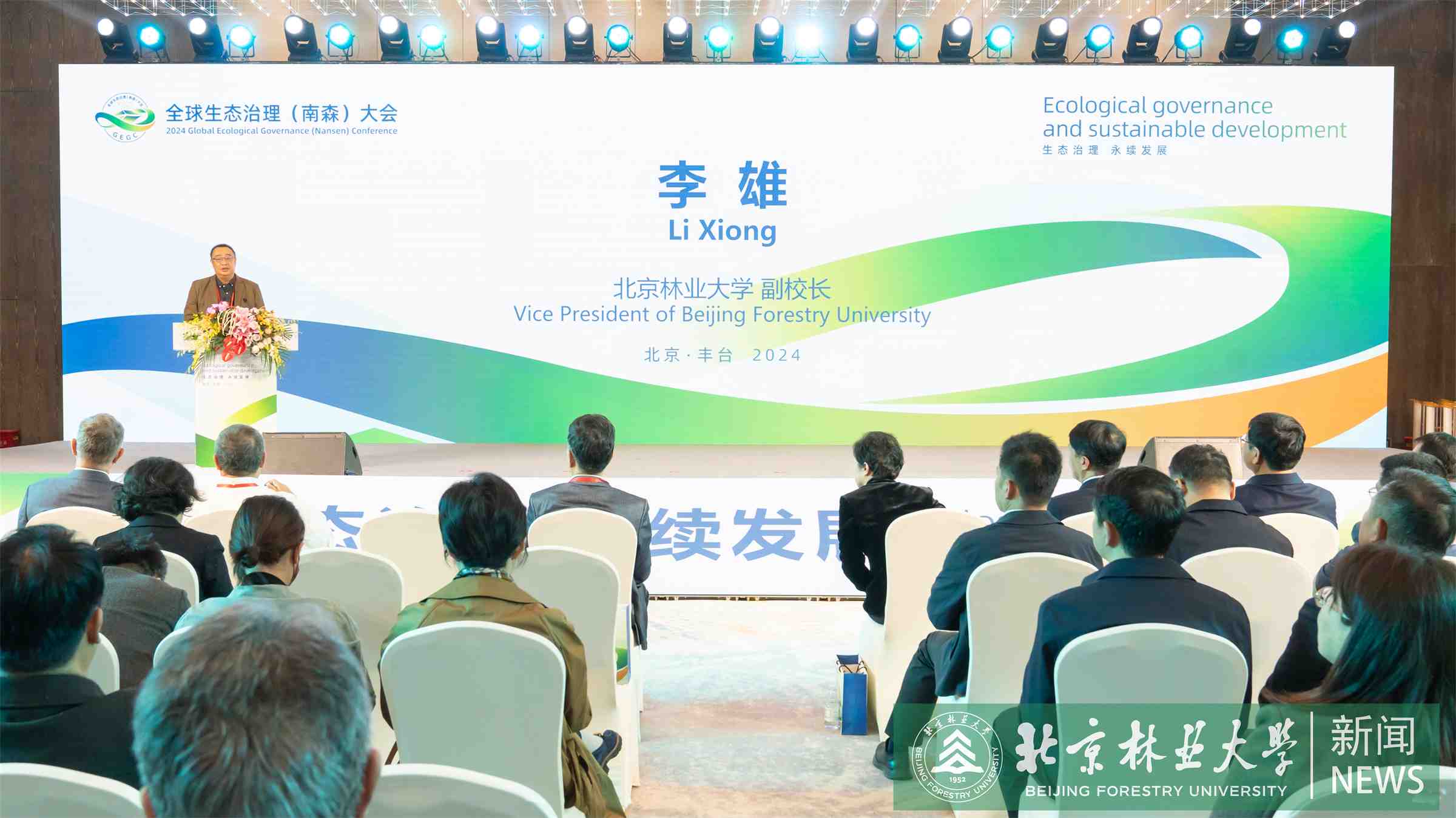Latest news
The International Floral Industry Conference was held on October 17th at the Xiamen Airlines Carnival Hotel in Beijing. Organized jointly by Beijing Forestry University, the Fengtai District Bureau of Landscaping of Beijing Municipality, and the Beijing Green Garden Group, the conference brought together experts from around the world to explore the evolution of the forestry and flower industry, as well as Beijing's role as a leader in the seed industry. Distinguished guests included Li Lan, Party Group Secretary and Chairman of Fengtai District; Ben Quanmin from the Beijing Municipal Forestry and Parks Bureau; and Vice President Li Xiong of Beijing Forestry University. The event was chaired by the Dean of the School of Landscape and Architecture at BFU.

The International Floral Industry Conference served as a platform for industry experts to collaborate and explore new approaches for the development of the forestry, grassland, and floral sectors, so as to strengthen the foundation for Beijing's progress in seed industry development. Looking ahead, BFU will further leverage its strengths to support the garden city development of Fengtai distrct. The university aims to create two flagship brands: ecological civilization and green industry development in Fengtai, establishing a model of university-community collaboration and shared growth. This partnership will contribute significantly to the high-quality development of the capital in the new era.
In her remarks, Li Lan highlighted the significant role of the floral industry in improving urban ecology and fostering sustainable economic growth. Ben Quanmin shared examples from garden city projects illustrating how horticulture enhances urban beauty and quality of life. The Dean of School of Landscape Architecture noted that the floral industry is a crucial element in building garden cities. Key discussions at the conference centered on strategies for advancing the floral industry and supporting high-quality urban greening in the capital.
At the conference, experts presented their latest research and insights on germplasm conservation, modern horticultural technology applications, and innovative productivity in the floral industry.
In his keynote address, Tim Edwards, former Vice President of the International Association of Horticultural Producers (AIPH), emphasized the importance and implementation strategies of the "AIPH Green City Standard". He noted that as urbanization accelerates, the development of green cities has become a critical global challenge. The AIPH Green City Standard seeks to advance sustainable urban horticulture and landscaping, improving ecological functions and enhancing residents' quality of life.
Donglin Zhang, a Fellow of the American Society for Horticultural Science and Professor at the University of Georgia, presented successful examples of new technology applications in urban settings. He highlighted that these innovations enhance visual appeal of city, foster community pride and a sense of belonging among residents, and generate substantial economic benefits by attracting tourists and driving local business growth.
Zhao Liangping, Vice President of the China Flower Association, emphasized that in today's era, the floral industry must shift from focusing solely on quantity to both quantity and quality. He called for a targeted approach, addressing prominent challenges in the floral industry and aligning with the objectives outlined in the Floral Industry Development Plan, and encouraged stakeholders to concentrate on key priorities, collaborate, and overcome obstacles collectively to advance high-quality growth in the floral sector.
Zhang Qixiang, Chairman of the National Flower Industry Technology Innovation Strategic Alliance and Professor of BFU, underscored the critical role of conserving and leveraging diverse floral germplasm resources to strengthen industry competitiveness. He highlighted that creating a national germplasm repository would lay a solid foundation for the floral industry's future growth.
Hu Yonghong, Chairman of the Asian Division of the International Association of Botanic Gardens (IABG) and Executive Director of Shanghai Chenshan Botanical Garden, discussed the diversity and ecological value of Paeonia plants. He emphasized that Paeonia serves not only as an ornamental plant but also holds important medicinal value as a traditional herb. Studying Paeonia germplasm resources helps to understand its growth patterns and adaptation strategies, laying a scientific foundation for future research and potential industrial applications. By studying the germplasm resources of Paeonia sinensis, we can better understand its growth patterns and adaptation mechanism, providing scientific basis for subsequent scientific research and industrialization.
Through a online video, Professor Sylvie Baudino from the University of Saint-Étienne, France shared his latest research on rose fragrance, offering insights into its chemical composition, ecological functions, and applications within the floral industry.
During the conference, experts held dynamic discussions on integrating ecological conservation with industry growth. They unanimously emphasized that sustainable development in the floral industry requires not only technological progress but also supportive policies and collaboration across all sectors of society.
The conference featured the launch of the National Floral and Tree Data Integration Service Platform, aimed at promoting the digital transformation of the floral industry through data sharing and connectivity. This initiative supports Beijing's goal of becoming a capital for the seed industry.
Written by Gao Xue
Translated and edited by Song He
Reviewed by Yu Yangyang












